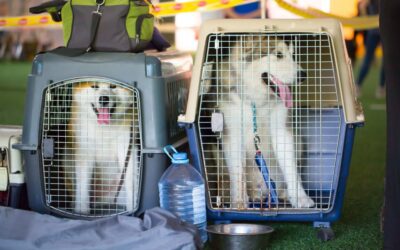To stop dog hair from going down the drain, use a drain strainer or a pet hair catcher. Groom your pet regularly to minimize shedding.
- The Hairy Concern: Problems Caused By Dog Hair In Drains
- Pre-brushing: A Simple Preventative Measure
- Innovative Tools: Accessories To Trap Dog Hair
- Bathing Habits: Techniques To Reduce Hair Fall
- Regular Maintenance: Keeping Drains Hair-free
- Lifestyle Changes For A Fuzz-free Home
- Frequently Asked Questions For How To Stop Dog Hair From Going Down The Drain
- Conclusion
Dealing with dog hair can challenge any pet-owner’s home maintenance routine, especially when it concerns plumbing. Drains are particularly susceptible to clogging due to pet hair accumulation. A straightforward, effective solution is incorporating a drain strainer or pet hair catcher during baths; it’s an investment that saves on costly plumbing repairs.
Regular grooming significantly reduces the amount of hair that could potentially end up down the drain. Beyond these targeted efforts, maintaining a hair-free environment involves consistent cleaning, such as vacuuming and using lint rollers. Securing your drainage system from the chaos of clogged pipes not only protects your plumbing but also allows for a cleaner and more enjoyable home for you and your furry friend.
The Hairy Concern: Problems Caused By Dog Hair In Drains
Dog hair in drains leads to serious clogs. Pipes can get blocked when hair accumulates. Plumbing systems suffer and need costly repairs. Each strand of hair can compound existing plumbing issues. Drains work hard but hair clogs slow them down.
The environment also faces risks. Hair blockages cause back-ups, requiring more chemicals to fix. Over-reliance on cleaning agents harms nature. Local water sources can be polluted with these chemicals. Wildlife and ecosystems are at stake. So, preventing dog hair from reaching the drain is key.
Pre-brushing: A Simple Preventative Measure
Pre-brushing your dog is key to keeping drains hair-free. Regular brushing reduces shedding, meaning less hair ends up in the tub. To make pre-bath brushing effective, always use a proper dog brush suitable for your pet’s coat. Smooth, long strokes help remove loose fur and detangle any knots. Pay special attention to areas prone to shedding. Brushing not only helps with hygiene but also strengthens the bond between you and your pet. Remember, consistency is crucial for maintaining a fur-free drain.
Innovative Tools: Accessories To Trap Dog Hair
Grooming gloves and deshedding tools are a pet owner’s allies. These products help to minimize loose hair. Use them before your dog’s bath. This will reduce hair going down the drain. Regular grooming with these tools is key. It keeps your pet’s coat healthy and lessens shedding.
Drain strainers and catchers come in handy during baths. They fit over your drain, trapping hair before it enters. Various sizes fit different drains. It’s essential to clean them out after each use. This ensures they work well each time.
Bathing Habits: Techniques To Reduce Hair Fall
Choosing the right shampoo plays a crucial role in reducing your dog’s hairfall. Opt for shampoos designed to strengthen your dog’s fur and minimize shedding. These products often contain vitamins and amino acids, promoting healthier skin and fur.
The optimal water temperature can significantly impact shedding levels. Aim for lukewarm water when bathing your dog. Too hot or too cold can increase hair fall. Warm water helps open up the pores, releasing loose fur, but lukewarm water is gentle on the skin and less likely to stimulate additional shedding.
Regular Maintenance: Keeping Drains Hair-free
Maintaining drains free from dog hair requires a routine approach. Natural drain cleaners can provide a gentle, yet effective solution. Ingredients like baking soda and vinegar work wonders. Pour a half-cup of baking soda followed by a cup of white vinegar into the drain. This combo creates a fizzing action that helps to break down hair and soap scum. After waiting for about 30 minutes, flush the drain with boiling water. This simple process ensures a clear passage for water without harsh chemicals.
Seeking help from professional plumbing services can also be beneficial. Plumbers can perform a thorough drain cleaning that exceeds DIY efforts. They have the necessary tools to remove any clogs and prevent future blockages. Regular plumbing maintenance is a key step to avoid the hassle of clogged drains. Entrusting this task to professionals ensures your home’s plumbing system stays in top condition.
Lifestyle Changes For A Fuzz-free Home
Keeping your home free of dog hair starts with proper pet nutrition. Feeding your dog high-quality food that includes omega-3 fatty acids can help maintain a healthy coat. A shiny and strong coat is less likely to shed excessively. Regularly scheduling grooming sessions is also crucial.
Brushing your dog several times a week reduces loose fur. It also distributes natural oils throughout their coat. This practice will keep their hair tangle-free. Dogs with thick or long hair may need daily grooming. Choose the right brush for your dog’s hair type. Consider a professional groomer’s help for the best care.
Frequently Asked Questions For How To Stop Dog Hair From Going Down The Drain
Why Do Dogs Shed So Much Hair?
Dogs shed hair due to their natural life cycle. This process keeps their coat healthy by removing old or damaged hair. Shedding varies with breed, health, and season. Managing it minimizes hair going down drains.
What Stops Dog Hair In Showers?
A drain hair catcher is effective in stopping dog hair in showers. It’s a strainer that fits over the drain and traps hair while allowing water to flow freely. Regularly cleaning the catcher prevents clogs.
Can Dog Hair Damage Plumbing?
Yes, dog hair can damage plumbing. When it accumulates, it forms clogs that obstruct water flow. Over time, this puts pressure on pipes and may cause leaks or bursts. Preventative measures protect your plumbing.
How To Groom Dogs To Reduce Shedding?
Regular grooming reduces shedding. Brush your dog frequently to catch loose hair before it spreads. Use a de-shedding tool appropriate for your dog’s coat type for optimal results. Less hair shed equals less in the drain.
Conclusion
Preventing dog hair from clogging your drains doesn’t have to be a chore. With simple tools and routines, you can keep your pipes clear. Remember, mesh screens and regular grooming are your best defenses. Embrace these habits, and wave goodbye to troublesome blockages.
Happy bathing to your furry friend!


